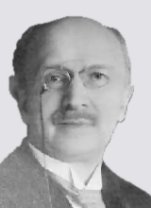|
性行為的發展
|
|
性行為的發展阶段:嬰幼兒期的性行為發展階段 |
|
 |
|
亞伯特·莫爾(Albert
Moll,
1862-1939)
莫爾曾經拼命地反對精神分析理論及其創建者西格蒙德·佛洛伊德。然而,他也同意兒童期有性行為的概念,並於1909年出版了一部有影響力的著作,書名叫《兒童的性生活》。 |
|
Albert Moll
(1862-1939)
vehemently opposed psychoanalysis and its founder Sigmund Freud. Nevertheless, he also subscribed to the concept of childhood sexuality and, in 1909, published an influential book titled “The Sexual Life of the Child”. |
|
|
超聲波成像技術顯示男胎有陰莖勃起,而且人們也發現在新生女嬰有陰道濕潤。按照馬斯特斯和詹森所使用的含義,這些現象可以被稱為“性反應”,但是,當把這種概念用於嬰兒時,可能意義不大。畢竟,我們成人現在與“性”興奮相關的典型的生理和心理反應,直到年齡稍大之前,並未開始出現。對於嬰幼兒,許多愉悅和快樂的體驗仍舊微弱。的確,就像許多性學家已經論述的那樣,草率地談論“兒童的性生活”也許並不明智。孩童時期的性也許只不過是一個現代發明,而不是一個現代發現。把舊時發現的生物學方面的事實作出新解,理解成一種文化構建的現象也許更為貼切。從前的年代,人們看待事物是非常不同的。例如,我們瞭解到在許多無文字記載的社會,甚至在歐洲的中世紀,父母、祖父母和奶媽為了撫慰孩子和使孩子放鬆,常常給幼兒進行手淫。那麼,我們應該把這種習慣當作“兒童性辱虐(sexual
child abuse)”[1]嗎?我們的遠祖也許就沒有過這樣的解釋。甚至當孩子們自己手淫時,他們的家人把這當作由於不舒適時的“正常”緩解,像撓癢癢或擤鼻涕那樣。兒童很可能也有愉悅感、甚至有高潮,但是這未曾被當作一種“性”體驗看待。只有隨著現代黎明來臨之際,當開始意識到要把兒童本身當作人類發展中的特定保護對象之時,這種行為才成為了“性”的行為。這就帶來了另一個相關的評判:一個在兒童期有性欲興趣的成年人常常誤以為兒童需要把“性”欲作為對他們的慈愛。然而,當這個成人對一名兒童的性欲意圖(erotic
intention)突然顯現時,這名兒童也許會感到驚訝、甚至感到震驚。(我們在此例舉的)有關這位成人的這種遭遇的假設進而已經完全被誤解了。總而言之,因種種理由,兒童的性欲概念是值得懷疑的。如果不分青紅皂白地使用這個概念,這可能導致誤解,因而,我們不能盲目地接納這個概念。就嬰兒和兒童來說,永遠都應該審慎地使用“性的(sexual)”這個詞。
|
|
Development of Sexual Behavior |
|
Stages of Development |
|
Infancy |
|
Ultrasound pictures have shown male fetuses with erections of the penis, and one has found vaginal lubrication in newborn girls. These phenomena can be called “sexual responses” in the sense used by Masters and Johnson, but this usage my not be very meaningful when applied to infants. After all, the typical physical and psychological reactions we now associate with “sexual” excitement do not begin to appear until later. For infants and small children, the many experiences of pleasure and wellbeing are still rather diffuse. Indeed, it may not even be wise to speak summarily of “the sexual life of the child” as many sexologists have done.
Childhood sexuality may be more of a modern invention than a discovery. It is probably better understood as a cultural construct, a new interpretation of old biological facts. Former ages saw things very differently. We know, for example, that in many preliterate societies, and indeed in the European Middle Ages, parents, grandparents and wet nurses regularly masturbated small children in order to pacify and relax them. Should we consider this practice “sexual child abuse”? Our distant forbears would not have understood such an interpretation. Indeed, even when children masturbated themselves, their families saw it as a “natural” relief from discomfort like scratching or blowing one’s nose. The children may very well have had pleasurable sensations and even reached orgasm, but this was not seen as a “sexual” experience. It became “sexual” only with the dawning of the modern age, when childhood itself began to be recognized as a special, protected phase of human development. This brings us to another pertinent observation: An adult with an erotic interest in children typically misconstrues their need for affection as “sexual” desire. The children, however, may be surprised and even shocked when the erotic intentions of the adult suddenly become clear. His assumptions about the encounter then turn out to have been totally mistaken. In sum, the concept of childhood sexuality is problematical for a variety of reasons. Used indiscriminately, it can lead to misconceptions and therefore should not be accepted blindly.
In reference to infants and children, the world “sexual” should always be used with caution.
|